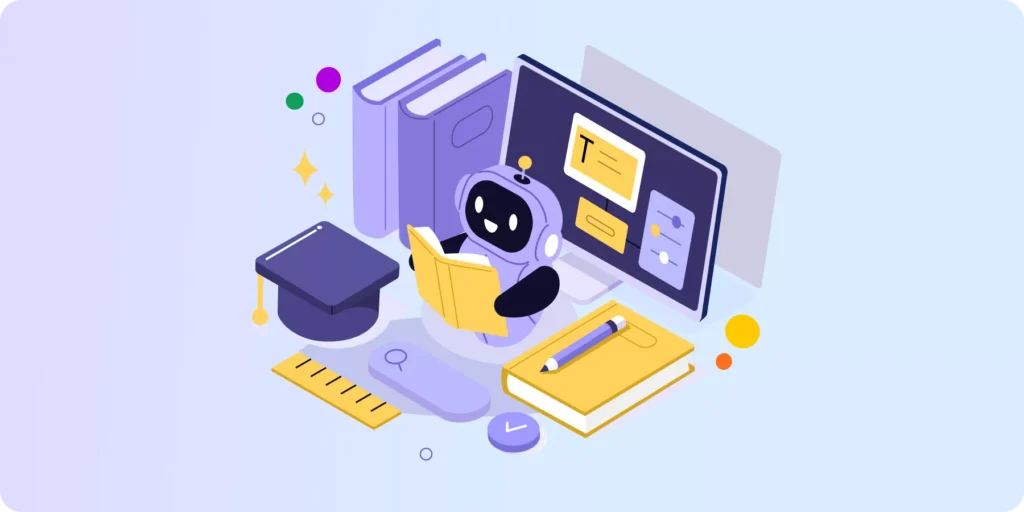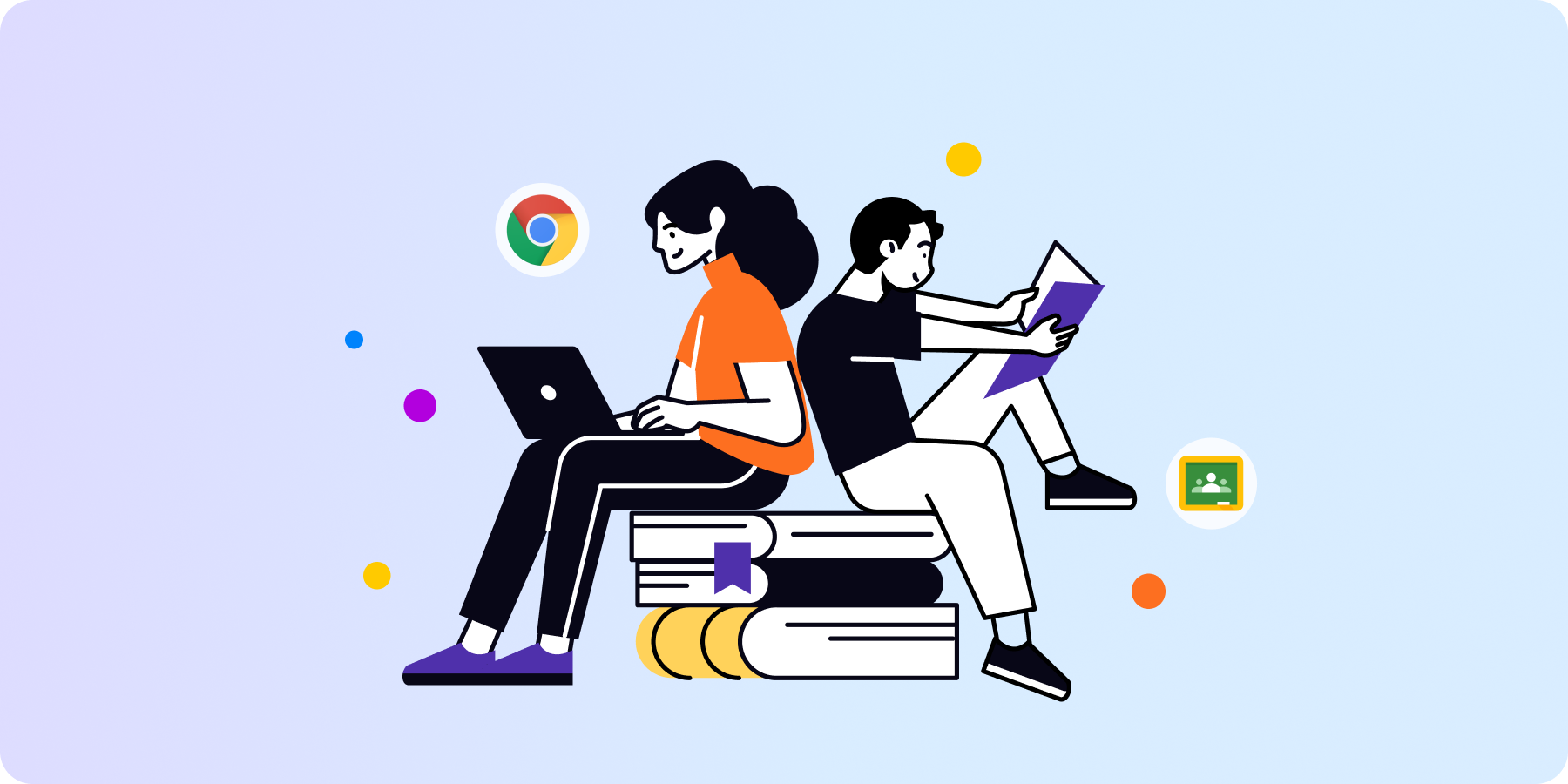Let’s face it: artificial intelligence (AI) is making waves in education, and there’s no one-size-fits-all response. While some teachers rave about how ChatGPT and similar tools ease their workload, others worry about data privacy, academic honesty, or simply finding the time to learn yet another piece of technology.
We’re not here to say we know the classroom better than you do; after all, we’re not the ones grading assignments day in, day out. But from speaking to teachers, reading their stories, and seeing how Google Workspace can be used, we’ve gathered a few suggestions that might help your school community navigate the AI landscape more comfortably.
1. “Where Do I Even Start?” | Data Privacy and Student Safety
The great number of AI apps and tools can feel like too much, especially if your district is encouraging quick adoption. It’s natural to wonder: Are these tools really safe for our students? One teacher, for instance, described feeling left behind as others embraced dozens of AI add-ons.
Where to Start
✔️ Clarify Your Policies
Work with your school’s Google Admin and IT teams to identify which AI tools and Chrome extensions are approved, and how everyone can maintain safe data practices. Shared guidelines, accessible to parents, students, and staff. Reduce the confusion around “what’s allowed” and “what’s not.”
✔️ Use Built-in Safeguards
If your school relies on Google Workspace, you already have strong privacy controls. Tools like GAT Shield can extend those controls by monitoring all activity and providing real-time Data Loss Prevention (DLP) on all sites, in all locations, and at all times.
✔️ Ongoing, Bite-Sized Training
Not everyone learns new tech at the same pace. Short, regular training sessions (online or in-person) can help teachers slowly build confidence without overwhelming them.
Even small steps, like clarifying which apps are safe and providing brief tutorials, can give educators a sense of relief that they’re protecting student information.
2. “They’re Using AI to Write Everything!” | Academic Integrity
Academic honesty is one of the top concerns educators mention when discussing AI. One Reddit user spoke about feeling upset that 90% of their students were relying on AI for homework. That worry is understandable: how do you foster genuine learning if students can simply copy-paste AI responses?
Possible Approaches
✔️ Create AI-Resistant Assignments
In-class presentations, interviews, or tasks tied to unique personal experiences challenge students to produce work that can’t be automated. By focusing on these real-world or personal elements, you reduce the likelihood of “one-size-fits-all” AI solutions.
✔️ Leverage Monitoring Tools
▪️ GAT’s Taskmaster: It streamlines and improves the assessment of student work. It compares the assignment text submitted by the student with AI-generated data. As a result, the tool provides valuable insights into the likely authenticity of the text, showing an estimated percentage of whether the text segment is “real” or “false”.
▪️ Revision History in Google Docs: Helps you see how a piece of writing evolves. If there’s a big chunk of text appearing out of nowhere, that’s a red flag.
✔️ Clear Boundaries and Consequences
Talk to your admin team about forming a school-wide policy on AI-generated work. Consistency across classrooms means students are less likely to try skirting the rules.
It’s not about demonising AI, but being transparent that using these tools for cheating undermines both trust and genuine learning.
3. “I Don’t Have Time for Another Tech Trend” | Teacher Support and Workload
Many educators, especially those juggling multiple classes, after-school clubs, and administrative duties, feel unequipped to learn a whole new set of tools. Few teachers mention that they barely know which AI tool to try, let alone how to use it effectively.
Ideas to Lighten the Load
✔️ Choose One Tool at a Time
Maybe ChatGPT is all you need right now for generating quick quizzes, prompts, or lesson-plan outlines. Start there before exploring any additional apps.
✔️ Collaborate and Share
If your school can set up a small AI-focused group, teachers can compare notes, share success stories (and AI fails!), and learn from each other’s practical experiences.
✔️ District Support
When your district encourages AI use, it’s fair to expect them to offer hands-on training or provide a designated “tech buddy.” Nobody should have to learn everything solo.
We’ve heard from educators who’ve said that with a little help, AI tools can save them hours, so long as they pick the right ones and get comfortable using them.
4. “But AI Isn’t Always Accurate…” | Bias and Reliability
AI outputs rely on the data they were trained on. Sometimes, this can lead to biased or out-of-date information.
“AI can be a good start… but I always double-check facts or wording.”
How to Respond
✔️ Treat AI as a Draft, Not a Final Answer
Encourage students to run any AI-generated text through a fact-checking process. If you model this in your lessons, students learn to view AI as a stepping stone rather than an authoritative voice.
✔️ Showcase AI Errors
Pick an AI-generated passage in class and prompt your students to find mistakes or questionable assumptions. It’s a great way to spark discussion while also helping them develop digital literacy skills.
✔️ Stay Updated
Because AI tools change rapidly, it helps to keep an eye on trusted education technology blogs. You’ll learn about new features or known issues and can adjust your classroom approach accordingly.
Mistakes can become teachable moments if you let students see how you approach AI with a critical eye.
5. “Can AI Actually Save Us Time?” | Simplifying Teaching Workflows
Beyond privacy and plagiarism concerns, many educators are also exploring how AI can streamline daily tasks. One Reddit user wrote:
“I recently tried a tool that helps turn slides into videos, which seemed like a time-saver, but I’m sure there are other approaches out there. What have you found useful for integrating AI into your teaching workflows?”
Teachers in that same thread mentioned using AI to automatically transform slides into multimedia lessons, generate quizzes, or rephrase student feedback to make it clearer and more constructive.
Ways to Simplify Your Day
✔️ Lesson-Planning Help
Tools like ChatGPT or Smodin’s AI Writer let you draft lesson outlines quickly. If your district allows it, try creating a “prompt template” that’s tailored to your specific subject and grade.
✔️ Automated Content Creation
Some educators use tools like Chatslide to convert static slides into short video lessons with narration. This can be a big help for flipped classrooms or supplemental materials.
✔️ Personalized Feedback
While grading must remain teacher-led, AI can offer suggestions for phrasing feedback in more constructive ways. Just remember to review AI’s suggestions so they align with each student’s unique work.
Even small AI additions can lift some of the admin load, giving teachers a bit more time for personal interaction with students.
In Conclusion
No two schools are the same. Some are already deep into AI tools, while others are taking their first cautious steps. Regardless of where you land on that spectrum, it helps to know you’re not alone in your concerns; many educators share the same worries about data privacy, academic honesty, or just feeling overwhelmed.
We hope these suggestions, drawn from both teacher feedback and real classroom experiences, can offer a helpful starting point. Though we’re not in your shoes, we admire the daily effort you put into guiding and supporting students. If you’re looking for ways to make AI feel more secure and manageable, consider exploring Google Workspace’s built-in solutions or tools like GAT’s Teacher Assist and Taskmaster. They can help provide digital safety, ease some of your workload, and help you keep a closer eye on AI misuse.
And remember: the more you share successes and struggles with colleagues, the closer you’ll get to finding that sweet spot where technology enhances learning, without overshadowing the invaluable human element that only a dedicated teacher can bring.
Insights That Matter. In Your Inbox.
Join our newsletter for practical tips on managing, securing, and getting the most out of Google Workspace, designed with Admins and IT teams in mind.





